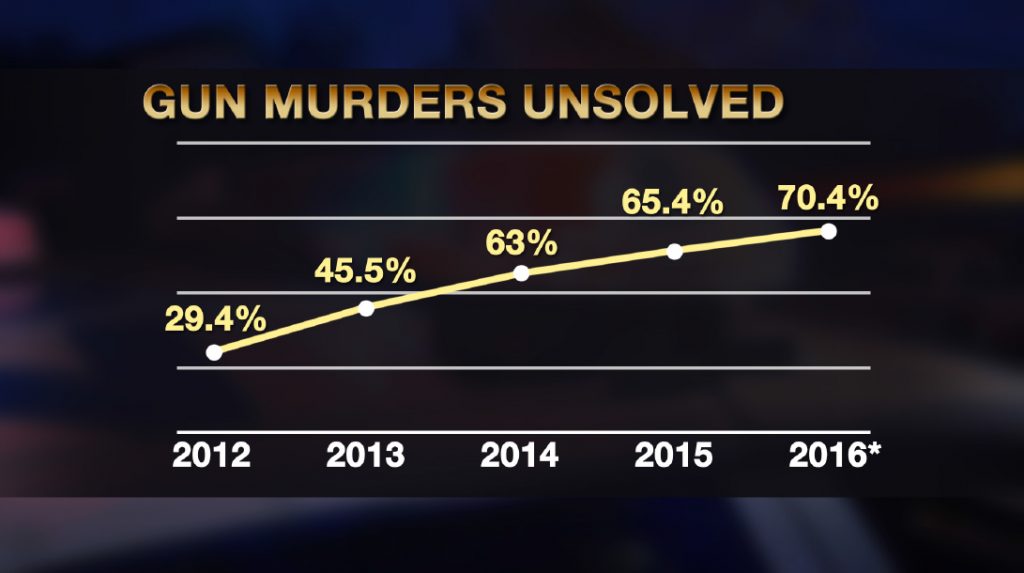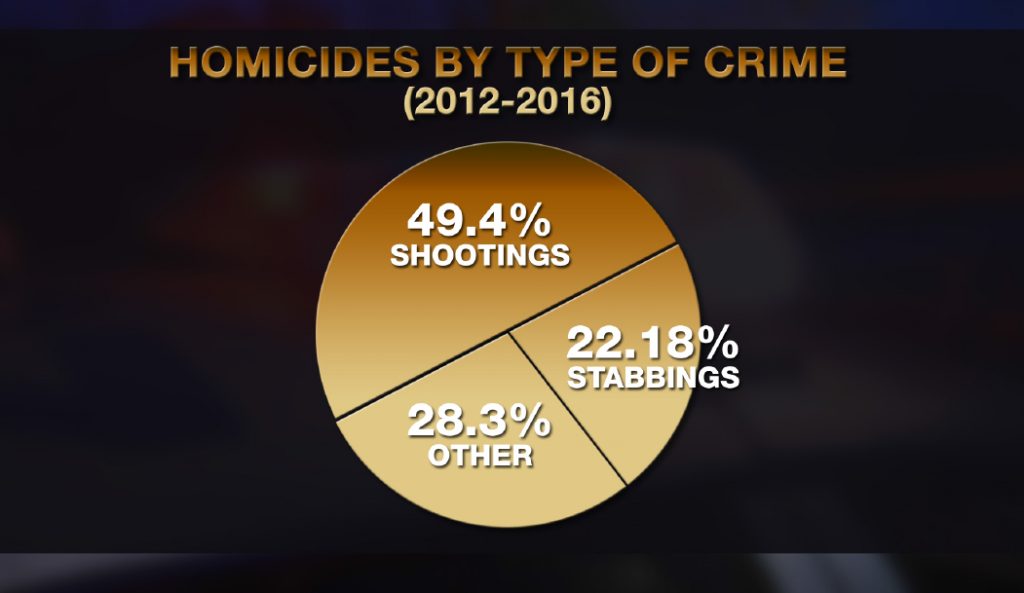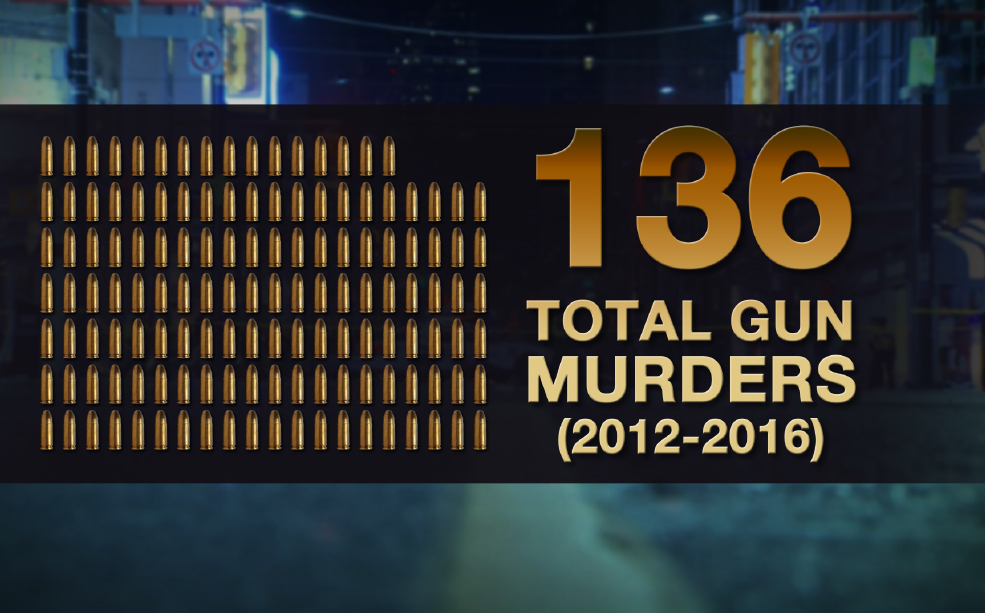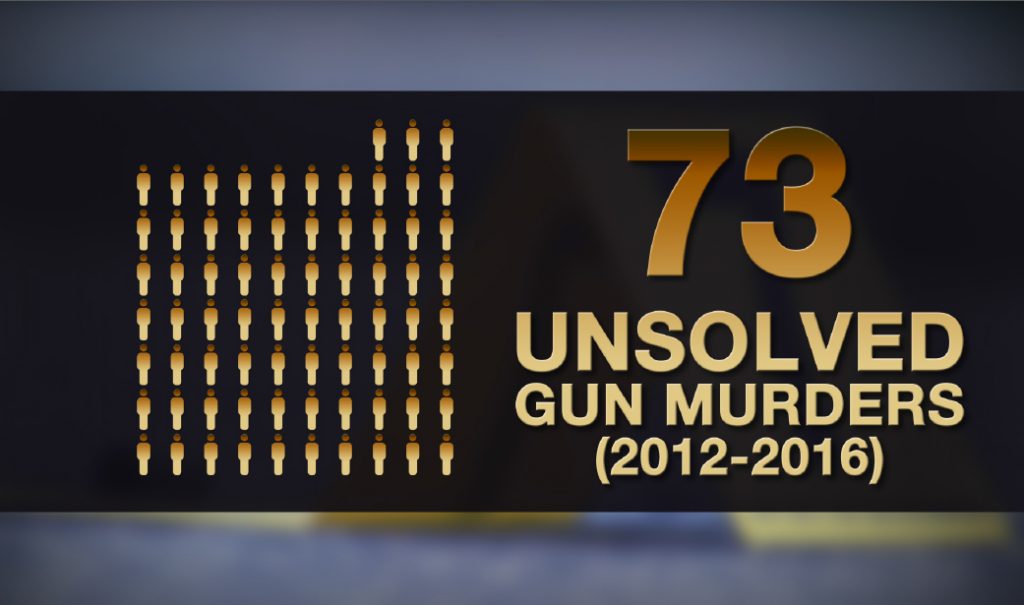Number of unsolved gun homicides in Toronto have more than doubled since 2012
Posted September 20, 2016 6:40 pm.
Last Updated September 20, 2016 6:48 pm.
This article is more than 5 years old.
The homicide rate in Toronto has remained relatively steady since 2012, but there’s been a marked increase in the number of fatal shootings that have gone unsolved.
Toronto police statistics compiled by CityNews reveal a disturbing trend over the past five years.
In 2012, 29.4 per cent of shooting homicides went unsolved. By 2015, that number skyrocketed to 65.4 per cent, and so far this year, it’s climbed even higher to 70.4 per cent.
Toronto has so far had 48 homicides this year The most recent took place August 27th when 61-year-old grandmother Peggy Ann Nash was shot to death near Dundas and Munro Streets.
Shootings remain the number one cause of death in Toronto homicides, followed by stabbings and other causes such as blunt force trauma or strangulation.

Mayor John Tory believes the adherence to a street code of silence is at least partly responsible for the challenges in solving gun homicides, many of which involve gangs.
“One of the reasons why police are having difficulty, in particular with shootings…is the fact that people are reluctant to speak to the police and cooperate with the police,” Tory said. “We have to get to the stage where people are more comfortable…with sharing that information.”
Former Toronto police homicide investigator David Perry agrees, but he also believes a return to more aggressive policing is necessary to reverse the trend.
“We’ve stopped carding, we’ve stopped doing street investigations under the fear that a police officer could be seen to be racially motivated rather than actually just doing their job,” said Perry, who now runs a security firm. “I think that’s had a significant impact.”
Former Toronto police Chief Bill Blair suspended the controversial practice of carding in January 2015, but Perry believes the tide had been turning for some time.
“Even though officially it’s only be a short time that police officers aren’t allowed to card people officially…it’s been quite some time that police officers have been under tremendous pressure to stop doing street investigations,” he said.
“Gangs are getting a stronger hold in the Toronto area and are becoming more active and more prolific and they are carrying their guns with impunity,” he adds.

Perry also notes more shooting deaths may have been solved in 2012 compared to other years considering the high-impact nature of some of the shootings that took place, such as the Toronto Eaton Centre shooting and the mass shooting on Danzig Street.
Audette Sheppard knows how gun violence can shatter a family.
Her son, Justin Sheppard, was shot to death on June 23, 2001 on a foot bridge that spans Rosedale Valley Road, north of Bloor Street. He was just 19.
“Justice heals the wounds that we suffer,” the still-grieving mom told CityNews. “But when it’s not served, those wounds are never cleansed. They are just gaping holes.”
“You’re living, but you’re really not alive.”
Sheppard believes more young people are adhering to a code of silence that stymies investigations.
“One young man told me, ‘I’d rather be a (defendant) than an informer. An informer is a rat.’ So that is very troubling to me that people are not willing to talk about it because of the appearance of them being a rat,” she said.
“There’s so many mothers out there just waiting…crying out for justice and justice never comes because justice delayed is justice denied.”
“We are all responsible,” she added. “It doesn’t just lie on the police…the reality is people are not coming forward and information is just not gathered.”

In a statement, Toronto police spokesperson Mark Pugash said a lack of community cooperation is a factor, but noted that year-to-year stats don’t tell the full story.
“Every homicide, by whatever method, poses unique challenges in getting people with information to come forward and assembling evidence to build a case,” he said. “There is no average time because no two cases are the same. Cases can be, and have been, solved many years later. Focusing on one category of homicide over a short time period reveals little.”
That’s cold comfort to moms like Audette Sheppard, who have lost a child to gun violence.
“I can’t lay blame on any particular person but we can do better than that, as a community, as a society,” she said.
“You have to create an environment where people feel empowered to come forward and feel protected to come forward. Because at the end of the day they are concerned about their own life.”









